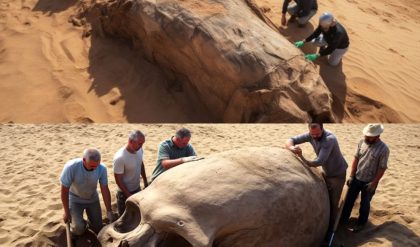When was circumcision first practiced? How did it evolve? Why was it practiced? The earliest literary evidence of the practice of circumcision goes back to ancient Egypt.
There are many hypotheses regarding the roots of the practice. Early Western scholars attributed the origins of circumcision to ancient Egypt. But many scholars today believe that the origin of the practice, as it is done in the West and the Middle East, goes back farther and originates with the inhabitants of southern Arabia and parts of Africa. Over the millennia, circumcision has been most often used as a religious rite, a rite of passage into manhood, but also as a form of punishment in wartime.

A Little or a Lot
Circumcision has been practiced in parts of Africa, Oceania, Judaism, and Islam. The form of circumcision that westerners are most familiar with is complete removal of the foreskin or prepuce, as it is practiced in Judaism.
However, in ancient Egypt and other cultures in Africa, only part of the foreskin was removed. In the Pacific islands, the frenum was snipped but the foreskin was left unmodified. This is interesting considering a Biblical reference where Yahweh commands the Israelites to circumcise their children again, “a second time” (Joshua 5:2). This could imply that some of them had already been circumcised the Egyptian way and had to be circumcised the Jewish or Israelite way.
The Hippie Town of Calcata – Hiding-Place of the Holy Foreskin of Christ The Ancient Origins of New Year’s Celebrations Pompeii fresco depicts hapless Priapus with a painful condition
Circumcision in Egypt and Israel
In ancient Egypt, circumcision had a rather different function and process than it did in ancient Israel. In ancient Israel, circumcision was taken as a sign of membership in the covenant community established between God and Abraham. It was an ethnic marker showing that they were a part of the Israelite nation.

“Isaac’s Circumcision.” (Public Domain)
Although it could be performed on adults if needed, it was usually performed on infants, eight days after birth, like among modern Jews. An adult was usually only circumcised if a non-Israelite decided that he wanted to be inducted into the Israelite community. Later, when the Israelite religion become more organized, becoming ancient Judaism, converts to Judaism were required to undergo circumcision. One way that early Christianity first distinguished itself from Judaism was that non-Jewish Christians were not required to be circumcised.
In Egypt, it was typically done on adolescent men who were about to be initiated into the priesthood or as adult males of the noble class. It is not clear that this is the case from archaeological and historical records, but Egyptian circumcision may also have been used to demarcate a special elite class. Egyptian circumcision is depicted on temple walls where young men are seen being restrained as a priest performs the circumcision with a knife.

Ancient Egyptian carved scene of circumcision, from the inner northern wall of the Temple of Khonspekhrod at the Precinct of Mut, Temple of Karnak, Luxor, Egypt. Eighteenth dynasty, Amenhotep III, c. 1360 BC. (Lasse Jensen/CC BY 2.5)
The Practice in Other African Cultures
Egypt is not the only African culture that practiced or practices circumcision. It is common among east African peoples and the Bantu, usually as a rite of passage into manhood. Young males of the Xhosa and Zulu ethnic groups traditionally had an elaborate circumcision ritual where their bodies would be painted with whitewash before their circumcision.
During the process, they would be isolated from the community for several weeks, especially from women. After the circumcision, they would abandon their cut foreskin in the forest, a symbol of them leaving behind their boyhood lives to become men, and then wash the whitewash off in a river. Circumcision is still regularly practiced among these cultures, but usually in hospitals instead of the traditional way.

Zulu man performing traditional warrior dance. (Emmuhl/CC BY SA 3.0)
Circumcision in Oceania
Circumcision historically was not limited to only Africa and the Middle East. A form of circumcision was also practiced in Oceania and Aboriginal Australia using sea shells as the cutting instrument. Circumcision in Oceania and Australia was a rite of passage into manhood as well as a test of bravery.
Human Blood Found on Ancient Maya Arrowheads, Bloodletting Rituals to Feed Life Force to the Gods 4 Completely Different Versions of the Story of Moses The Real Reason That Men in Classical Portrayals Were Given Small Manhoods
Wartime
Circumcision is not only used as a rite of passage to manhood or for religious reasons. It has also been used to punish enemy soldiers. There have been cases where soldiers captured in battle would be circumcised, especially in the Middle East, east Africa, and south Asia.
Historical Impact
Circumcision was once a rare custom, and most cultures outside of Africa, the Middle East, and Oceania did not originally practice it. It nonetheless has had a significant influence on the history of civilization, especially since one of the pillars of western civilization, ancient Israel, made it an ethnic marker for being an Israelite.
Today, the practice still continues with an estimated one-third of males worldwide being circumcised. It is most common among Muslims and Jews, for religious reasons, but it is also widespread in the United States, where it is implemented for prevention of health conditions, though many of the world’s major medical organizations do not agree that there is any significant benefit which justifies the risks.
Circumcision is becoming increasingly controversial due to concerns about lack of informed consent and infringement of human rights.






